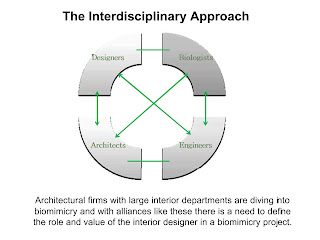“The more people learn from nature’s mentors, the more they’ll want to protect them.”
-Janine Benyus
1. What is biomimicry?
Biomimicry is a not a new concept, but a new term. Leonardo DaVinci took a stab at this when he was influenced by birds and created drawings that depicted flying machines. The Wright brothers spent time observing birds in flight and applying some biomimetic principles to their airplane prototype. The Eiffel Tower used biomimicry when the designer researched the femur bone in the leg. The Crystal Palace, the Great Exhibition in 1851 also used biomimcry as they relied on an Amazon Lily for the structural iron spanning. And did you know, the invention of Velcro is biomimetic!
‘Biomimcry’ was established in 1990 by biologist Janine Benyus as she tried to find a name for her very first file folder housing a journal article on artificial photosynthesis and subsequently a mega-category that would encompass all instances of nature-inspired innovations. It was at this moment when she went to the dictionary and found the terms: bios, meaning life, and mimesis, meaning to imitate. “Biomimcry’ was then coined in 1997 when her book, Biomimicry: Innovation Inspired by Nature was published.
2. Sooo…what is biomimicry?
- “Biomimicry is learning from, and then emulating natural forms, processes, and ecosystems to create more sustainable designs”. (Benyus, 2009, “A Biomimicry Primer”)
- “Biomimicry is an emerging discipline that seeks sustainable solutions by emulating nature's designs and processes…” (Biomimicry Group, 2011)
- …(biomimicry)it is more than emulating nature, it is emulating the ultimate sustainable entity-nature and if emulated correctly the outcome will also be sustainable. (Benyus, J. M. (1997). Biomimicry: Innovation inspired by nature. New York, NY: HarperCollins Publishers Inc.)
Biomimicry is an act of seeking nature’s advice before something is designed. It is not on what you extract from nature, but what you learn from nature. It is a cyclic process (picture a spiral or nautilus shell).
(photo by: Chris 73 / Wikimedia Commons)
--->First, find "a need" or "a problem" that needs to be solved.
--->Then, biologize the question: “how would nature______(fill in the blank)? ”.
--->Next, set out to discover; look to nature to answer your question.
--->While discovering, create taxonomies of life’s strategies. This simple means develop a list of multiple organisms, or natural things that answer your question and potentially solve your problem then abstract from them the repeated successes and their principles.
--->Next, emulate (yes, easier said than done) but mimic the natural form, mimic the natural function, mimic the natural ecosystem!
--->Then evaluate.
(Refer to the Biomimicry Institute's: "Challenge to Biology Design Spiral" found at: http://www.biomimicryinstitute.org/about-us/biomimicry-a-tool-for-innovation.html)
If you look to nature as a model, a measure, and a mentor you are on the right track. Also note, sustainability is an objective of biomimicry. You want to up-cycle just as nature does. The way we currently make materials relies on high pressure, chemical baths, etc. Today, we make things by taking a bulk material and carving it down to what we want, thus resulting in 96-98% waste. Nature does the opposite; it builds from the bottom up in a self-assembly process. Just look at how a rainforest or a coral reef sustains and you will see my point!
If you make a bio-inspired fabric using green chemistry, but you have workers weaving it in a sweatshop, loading it onto pollution-spewing trucks, and shipping it long distances, you’ve missed the point. (Benyus, 2009, “A Biomimicry Primer”).
Be sure your designs are not shallow in their mimicry, but rather as fully life-inspired as they can be!
3. Why should designers like yourself care about biomimicry today?
Biomimicry has the potential to take interior designer to the next level sustainably. With things like LEED certification (*see note below) in full effect we can simply go back to the roots (a.k.a. nature) and be able to meet these criteria more efficiently and productively.
*LEED is an internationally recognized green building certification system, providing third-party verification that a building or community was designed and built using strategies aimed at improving performance across all the metrics that matter most: energy savings, water efficiency, CO2 emissions reduction, improved indoor environmental quality, and stewardship of resources and sensitivity to their impacts. (USGBC, http://www.usgbc.org/DisplayPage.aspx?CMSPageID=1988)
4. How might biomimicry help the field of sustainable design?
Janine Benyus states it better than I could ever say it,
“…the more people learn from nature’s mentors, the more they’ll want to protect them” (Janine Benyus. (2010, para 5). Retrieved August 25, 2010 from http://janinebenyus.com/)
5. Share why you are personally drawn to biomimicry
There are few things more beautiful to the human soul than good design. Nature is design, I am an interior designer thus I am drawn to this. I am also intrigued by the interdisciplinary action arising between biologists, architects, designers, and engineers.
6. How do you hope to use biomimicry to influence your work?
I look forward to learning more from nature and in turn apply this to my field of interior design!








